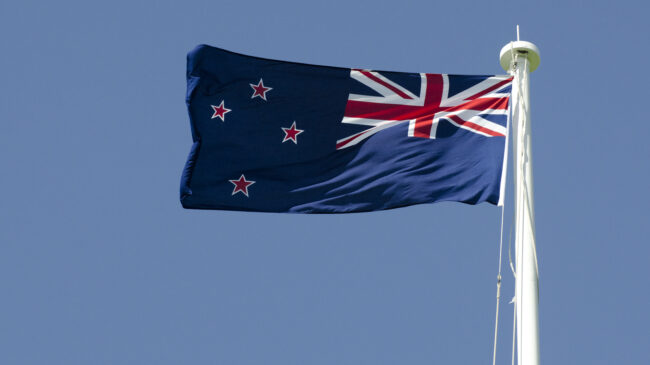New Zealand’s plan to be smoke-free by the year 2025 is ambitious, with a raft of policy proposals hitherto untested in the rest of the world. The plan’s key planks include:
- Removing 95 percent or more of the nicotine from cigarettes.
- Slashing the number of retailers that can sell tobacco by 90-to-95 percent.
- Criminalizing the sale of tobacco to people born in 2009 or later.
While yet to be passed into law, the New Zealand policy is under consultation and will no doubt be the subject of intense discussion among stakeholders, policymakers, and the general public.
The plan’s call to reduce the amount of nicotine in cigarettes by more than 95 percent is not a simple product reformulation—it amounts to a prohibition on cigarettes in New Zealand. The New Zealand government’s hope is that drastically reducing nicotine in cigarettes will prevent young people from starting to smoke and encourage a large slice of current adult smokers to quit nicotine or switch to safer alternatives like e-cigarettes.
Some evidence from small trials suggests smokers are more likely to quit smoking or reduce their cigarette intake when using very low-nicotine cigarettes. However, one of the most prominent trials published in the New England Journal of Medicine in 2015 showed that more than 70 percent of those assigned to use low-nicotine cigarettes broke the rules and smoked regular cigarettes during the study period.
Some of these studies on reducing the amount of nicotine in cigarettes found that vulnerable populations, like individuals with psychiatric or mood disorders, those suffering from opioid use disorders, and low-income women showed no difference in quit rates when compared to regular smokers.
Speaking to The New York Times in reference to a similar proposal to reduce the amount of nicotine in cigarettes in the United States, Lynn T. Kozlowski, a tobacco control expert from the University at Buffalo, urged caution:
Lynn T. Kozlowski, a tobacco researcher at the University at Buffalo who has contributed to four Surgeon General reports on smoking since 1981, said nicotine was a highly addictive drug, with a stranglehold on users that could rival cocaine and heroin, and that the F.D.A. needed to consider how a sweeping decrease of nicotine in cigarettes would affect smoker behavior.
“What scares me is a national experiment with the very low nicotine cigarette that is done without some testing in the real world,” he said. The studies many experts cite when promoting a 95 percent drop in nicotine levels relied upon paid participants, he noted, adding that some of them secretly smoked their own brands at the same time that researchers were plying them with low-nicotine cigarettes.
When it comes to New Zealand’s plan to restrict the number of retail outlets that can sell cigarettes, the only country New Zealand can point to with a comparable policy is Hungary. In 2013, Hungary cut the number of outlets in the country allowed to sell tobacco by 83 percent. A 2020 study published in Tobacco Control examining tobacco retail licensing systems in Europe found there is “little empirical evidence for the effect of tobacco licensing on smoking behaviors.” And, as of 2019, Hungary’s smoking rate, 19.3 percent, remained above the European Union average of 18.4.
The untested interventions being pursued in New Zealand also risk severe unintended consequences, many of which will fall most heavily on the country’s indigenous Māori population. Māori smoking rates are elevated compared to the rest of New Zealand’s population. It is a pattern not unique to New Zealand. Groups with fewer educational opportunities and lower incomes are far more likely to smoke. This is important because one of the main goals and arguments for the current tobacco control plan is to narrow health inequities within New Zealand’s population.
Of course, with prohibition, there will be a huge incentive for smugglers to import cigarettes into the country, already a major problem when it comes to evading tobacco tax. There will also be an incentive for entrepreneurs to find ways to add nicotine to cigarettes. Because Māori have higher smoking rates, we can reasonably expect much of the illicit market activity related to cigarettes to be concentrated in Māori communities.
The government will have to answer some tough questions if these policies are to come into effect. For example, what will the criminal penalties be for the sale or trade of these cigarettes? Will the possession of any or large amounts of full nicotine cigarettes be criminalized?
Criminalizing the conventional tobacco market will likely increase the already substantial inequities in New Zealand’s criminal justice system. New Zealand’s incarceration rate, 170 per 100,000, is well above the Organization for Economic Co-operation and Development average of 147.
Māori are 5.7 times more likely to have a police interaction than other New Zealanders. Though Māori account for just 16 percent of the country’s population, they make up 51 percent of New Zealand’s prisoners. Māori are also more likely to be handcuffed, pepper sprayed, arrested, convicted, sentenced, and imprisoned, according to a 2017 report from the New Zealand police.
The government’s regulatory impact statement concedes that it does not “consider compliance and enforcement, including any offenses and penalties.” Fortunately, New Zealand has begun to accommodate safer nicotine alternatives like e-cigarettes, which have helped many New Zealanders quit smoking.
Instead of launching a new experiment in prohibition, New Zealand should inform cigarette smokers about the potential health benefits of switching to safer alternatives and ensure greater Māori access to smoking cessation services.

